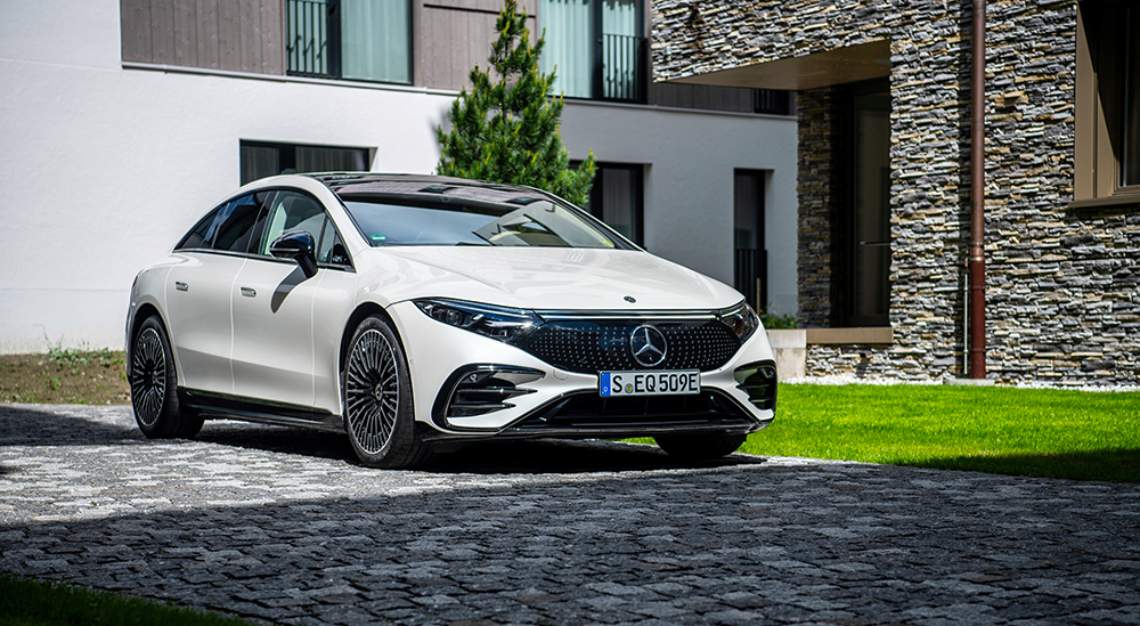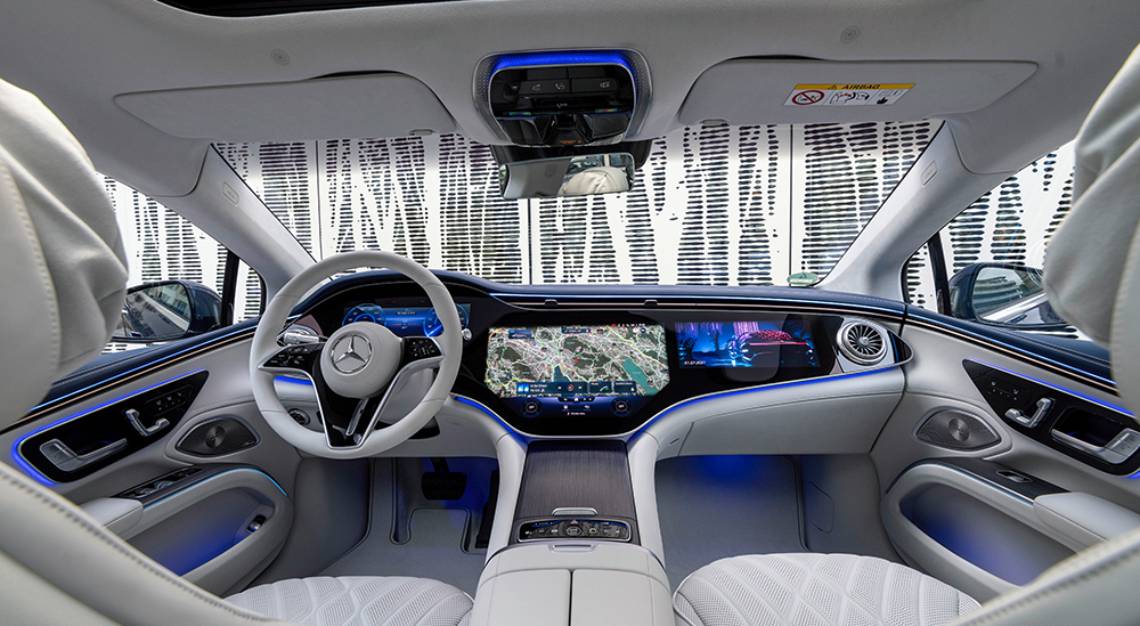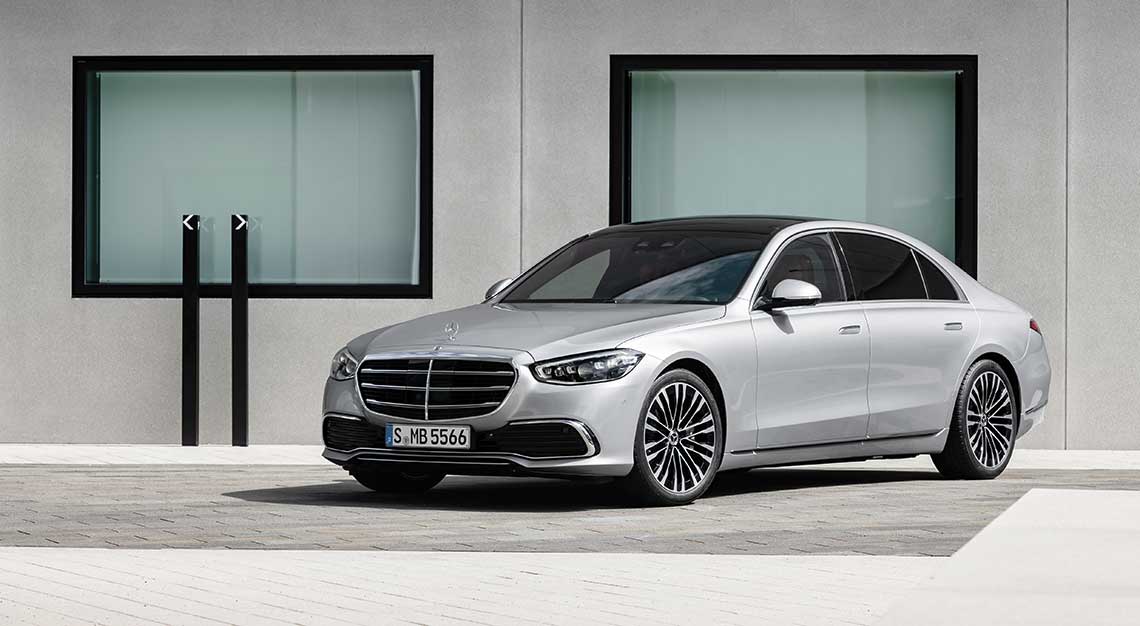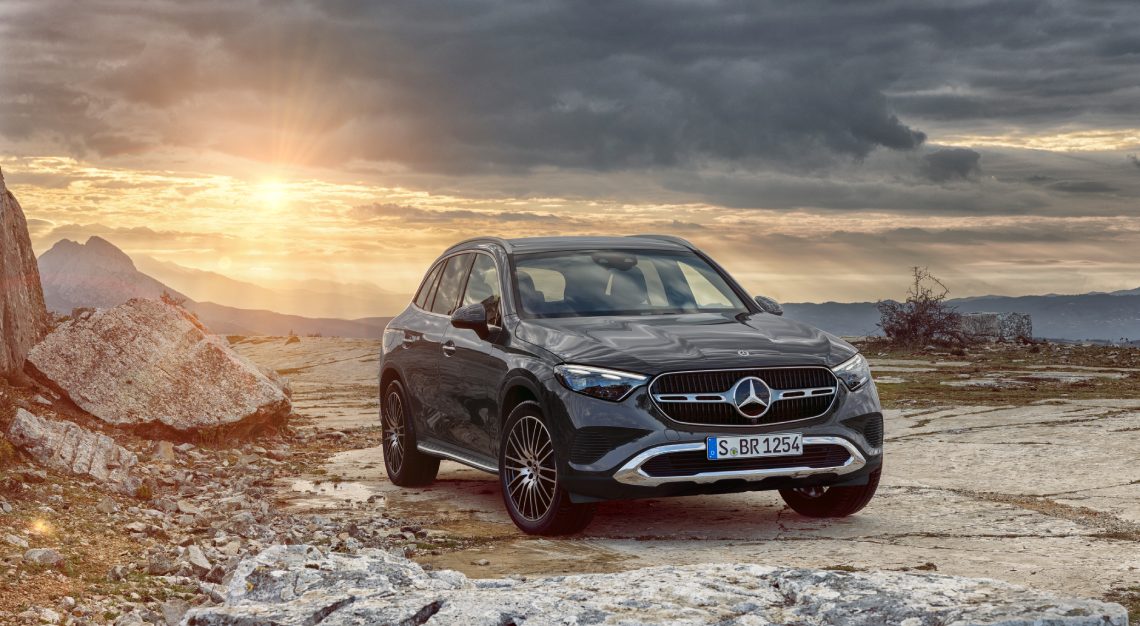The marque’s flagship EV isn’t just an all-electric version of the legendary S-Class saloon
It may come as a surprise that Mercedes, renowned for its prowess with internal-combustion engines, had its name on a series-production electric vehicle (EV) as far back as 1906, but the world wasn’t ready for mass adoption of the tech. Times have changed and the marque’s recently announced dedicated lineup of battery-powered cars and an SUV has been greatly anticipated. The Mercedes EQ line will eventually feature electric versions of the brand’s most popular models and will be led by the new EQS.
As the name suggests, the EQS is the automaker’s fully electric take on its longtime flagship, the S-Class sedan. But the car is more than just a zero-emissions version of the venerable saloon. Coming one year after the introduction of the four-door’s latest generation, it’s a complete reimagining of the car, packed with advanced tech inside and out.
Amid Tesla’s dominance over the market—nearly two-thirds of all EVs are made by Elon Musk’s company—rivals like BMW and Audi are ramping up their electrification efforts. For Mercedes, the EQS represents the German automaker’s first chance to define luxury in the electric era. The model is also, as you’ll find out, one seriously impressive statement. Here’s what you need to know.

Engine, power and performance
Any conversation about the EQS needs to begin with its all-electric power train. Actually, its two power trains, one for each EQS model that will be available at launch—the EQS 450+ and the EQS 580 4MATIC. The first sedan has a single-motor setup and rear-wheel drive, while the second has two motors that send power to each of the car’s four wheels.
Unsurprisingly, there’s a pretty vast difference between the capabilities of the two configurations. The entry-level EQS 450+ is no slouch, though. The single-motor version produces 329 hp and 406 ft lbs of torque, more than enough for a car you’ll be driving every day but not enough to compete with the EQS 580 4MATIC. The two-motor variant produces an impressive 516 horses and 611 ft lbs of twist.
Those are more than solid performance specs. But they do pale in comparison to the Lucid Air and Tesla Model S Plaid, both of which deliver over 1,000 hp, a figure that used to be only attainable by the most extreme supercars. Still, the EQS 450+ can accelerate from zero to 100 km/hr in 5.5 seconds and reach a top speed of 209 km/hr. The more powerful EQS 580 4MATIC, meanwhile, can launch itself to 100 km/hr in just 4.1 seconds, though its top speed is identical to that of its single-motor sibling. For most drivers, especially those who mainly use their cars to commute and drive around town, that’s more than enough power.

First drive impressions
Robb Report has actually had the chance to take the EQS for a spin twice already. Automotive editor Viju Mathew test drove the concept, the Vision EQS, in March 2020 and was struck by just how different the experience felt. “It’s so silent, otherworldly and responsive that I start to wonder if the wheels of this zero-emissions concept are actually touching the tarmac or floating a few inches above,” he wrote at the time. Meanwhile, writer Basem Wasef came away from his time with the production version impressed by Mercedes’s ability to imbue it with genuine gravitas. “The EQS evokes a feeling of well-crafted, old-world solidity despite its unrepentant digitisation, which includes a 12.3-inch virtual instrument panel, a 12.8-inch central display and an available Hyperscreen, which adds a customisable touchscreen display ahead of the front passenger,” he wrote.
Battery range and charging
When the EQS made its debut earlier this year, the car was expected to offer a range in excess of 644 kilometres (indeed, that’s what we were told specifically on our last test drive). In the end, the EV couldn’t deliver on that promise, with the EQS 450+ receiving a range rating of just 563 kilometres from the EPA, while the AWD EQS 580 4MATIC was rated for 340 miles. Those figures, of course, aren’t bad by any stretch of the imagination (especially for the more powerful sedan). In fact, both models will be among the longest-range EVs currently on the market. But Mercedes set high expectations for its EV, so it was both surprising and disappointing that it couldn’t quite deliver.
The still-impressive range for the EQS comes courtesy of a lithium-ion battery pack with 107.8 kWh of usable storage. And DC fast charging will allow you to go from 10- to 80-percent capacity in just 35 minutes. If you don’t have a fast charger at home, a standard Level 2 system will replenish your EQS to 100 per cent in just over 11 hours. That’s not expedient by any means, but if you’re using the car mostly for commuting, chances are you’ll rarely go below the 50 per cent mark, so your daily charge will take less time. Think of it like plugging in your smartphone before going to bed and waking with 100 per cent battery capacity.

Exterior and design
If the EQS was just a new S-Class with an electric power train, it would be a striking car. But Mercedes realised that if its flagship EV was going to stand on its own, it needed its own distinct look. The two sedans certainly look like they belong to the same family, but the EQS has more in common with the Vision EQS concept from 2019. While not as futuristic as the dreamy prototype, it’s equally wide-set in stance and shares its curvilinear shape, with sweeping lines traveling from front to back in an attempt to make the car as aerodynamic as possible. In fact, it’s reported to have an aerodynamic coefficient of 0.20, touted by Mercedes to be the new benchmark for production cars.
The biggest change is up front, though. With no combustion engine to cool, Mercedes’s Panamericana vertical-slat grille has been replaced with a black panel sporting the brand’s iconic star logo in its center surrounded by a field of smaller three-pointed stars. It’s topped by a continuous LED band that connects the two Digital Light smart headlamps. In addition to providing front end lighting, this panel also houses a number of cameras and sensors, including radar and lidar. The hatch-like rear is adorned with a similar lighting motif. Overall, the EQS may look slightly less stately than the S-Class, but its lines are decidedly more modern.

Interior, infotainment and connectivity
The EQS really comes into its own when you open up the doors. The sedan has a thoroughly futuristic interior unlike anything we’ve seen in a series-production vehicle. The front seats look like the cockpit of a space ship, especially if you opt for the dashboard-spanning MBUX Hyperscreen infotainment system. Designers also took advantage of the sedan’s 126.4-inch wheelbase to make the rear as roomy as possible. The back bench has space for three passengers, or two if you opt for a center console. High quality materials—like quilted leather covering the seats—abound throughout the cabin. There are also a number of wellness features, like a HEPA filtration system, massaging seats, ambient lighting and in-cabin soundscapes meant to calm and soothe.
The EQS’s most stunning feature may be its 56-inch MBUX Hyperscreen. The massive infotainment touchscreen stretches across the whole width of the car, and offers up a staggering 377 square inches of visual space, broken up only by integrated air vents. It comprises three displays seamlessly blended together via OLED technology: one for the driver, one in the traditional infotainment position and another solely for the front passenger should they get tired of gazing at the open road.

The 12.3-inch driver’s display will act as a digital gauge cluster from which you can monitor the car and journey. The 17-inch infotainment and 12.3-inch passenger displays will allow you and your passengers to select entertainment options, check out your route and adjust the climate control settings. These same options, along with Android Auto and Apple CarPlay compatibility, are also accessible via a standard 12.8-inch infotainment screen if you opt against the Hyperscreen, but what’s the fun in that?
Which EQS is best for you?
Power trains aren’t the only differences between the two EQS models. The tri-display MBUX Hyperscreen is only available on the EQS 580 4MATIC as an upgrade. The EQS 450+ has the same 12.8-inch infotainment screen as the current-gen S-Class, which is more than adequate, but the Hyperscreen certainly takes the EV’s sleek and modern interior to the next level.
Those aren’t the only choices you have, though. Both models will be available with one of three trim packages: Premium, Exclusive and Pinnacle. The Premium is the entry-level model, but still includes features like 64-colour ambient lighting and a Burmester 3-D sound system. The Exclusive adds four-zone climate control, massaging front seats and a head-up display. Meanwhile, the Pinnacle, as the name suggests, is the model’s most luxurious edition, offering all the features of the other packages but with a center console and even more comfortable seating in the rear.
This story was first published on Robb Report USA






